Kelly Jensen's Blog, page 112
June 9, 2014
A Million Little Followups (& A Thank You!)

Kimberly and I are honored to have been named a winning blog in YA Highway's web awards. Thank you to the amazing community who voted us as the best librarian review blog.
I also send out a huge thank you to those who named my tumblr a best review tumblr and who named me a runner up in my commitment to feminism in the community. I'm grateful and honored and thrilled by all of this. It was a fantastic way to kick off my Monday.
We appreciate your readership, your feedback, your discussions, and your sharing our work so much. The YA community is such a great one.
***
You may remember earlier this year I wrote about a review I read in School Library Journal about Julie Halpern's The F-it List and how it missed some key points?
After the post ran, I was contacted by one of the SLJ editors asking if I'd be willing to writ a 300-word Letter to the Editor summing up my post. So I did.
That ran today, in conjunction with a response from the original reviewer. I love that they did this -- but I will say, I'm disappointed in the response.
***

Tomorrow, you can catch me on Steve Thomas's Circulating Ideas podcast. I'll link it up here later this week when it's live, as well.
I went on the show to talk about my book, about contemporary YA fiction, and about YA reader's advisory. It was a fun discussion.
***


Speaking of my book, if you have Baker and Taylor or Ingram to do your collection ordering, you can pre-order the book. Information has been submitted to Amazon and Barnes & Noble, and they'll have it available for ordering soon.
The second screen shot is from Toronto Public Library, the first library (!!) to have my book on order. Toronto always has a sweet spot in my heart, but this further cements it.
I thought I wouldn't be excited about it again until it was in my hands, but seeing it in a library catalog really hit me. I'm thrilled.







 Related Stories"Summer" Reads, 2014 EditionFour Short(er) Contemporary YA Reviews: Jennifer Brown, Katrina Leno, Steve Brezenoff, and Amanda MacielUnfinished Books
Related Stories"Summer" Reads, 2014 EditionFour Short(er) Contemporary YA Reviews: Jennifer Brown, Katrina Leno, Steve Brezenoff, and Amanda MacielUnfinished Books
Published on June 09, 2014 11:12
June 8, 2014
"Summer" Reads, 2014 Edition
Sure, you could have a post about beach reads or a post about the kinds of books that are about summer and how great summer is. But I thought instead of going that route, I was going to make a YA summer reading list that's a bit more meta.
How about a roundup of YA titles out this year that feature "summer" in the title? Some are out during the summer, some are set during the summer, and maybe some have nothing to do with summer at all (I doubt that a bit, but it's possible since I haven't read all of these). It's possible I'll miss a few titles, so feel free to chime in with other 2014 YA "summer" titles you know about.
All descriptions are via WorldCat. I've included release dates for those titles not yet available.
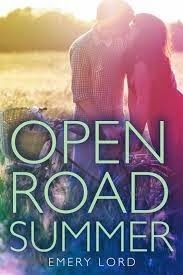
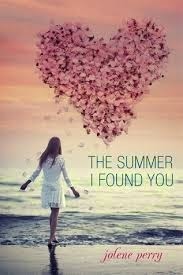
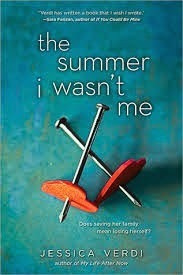
Open Road Summer by Emery Lord: Follows seventeen-year-old Reagan as she tries to escape heartbreak and a bad reputation by going on tour with her country superstar best friend--only to find more trouble as she falls for the surprisingly sweet guy hired to pose as the singer's boyfriend.
The Summer I Found You by Jolene Perry: Kate, seeking distraction from her recent diabetes diagnosis, begins dating Aidan, a young veteran who lost an arm in Afghanistan, and the two soon realize that they might mean more to each other than they first thought.
The Summer I Wasn't Me by Jessica Verdi: Ever since her mom found out she was in love with a girl, seventeen-year-old Lexi's afraid that what's left of her family is going to fall apart for good. New Horizons summer camp promises a new life for Lexi--she swears she can change. She can learn to like boys. But denying her feelings is harder than she thinks.
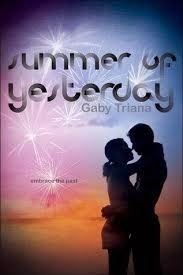

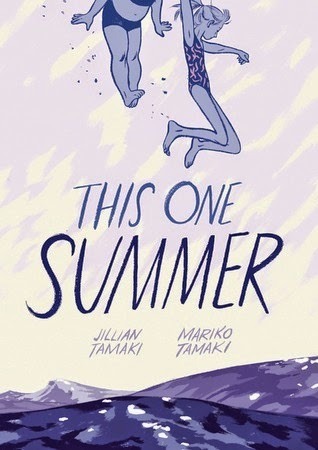
Summer of Yesterday by Gaby Triana: As she struggles with her parents' divorce, seventeen-year-old Haley is mysteriously transported to a theme park in the past where she finds love and meets her teenaged mother and father.
Summer on the Short Bus by Bethany Crandell: Cricket Montgomery has been thrown under the short bus. Shipped off to a summer camp by her father, Cricket is forced to play babysitter to a bunch of whiny kids--or so she thinks. When she realizes this camp is actually for teens with special needs, Cricket doubts she has what it takes to endure twenty-four hours, let alone two weeks. Thanks to her dangerously cute co-counselor, Quinn, there may be a slim chance for survival. However, between the campers' unpredictability and disregard for personal space, Cricket's limits get pushed. She will have to decide if suffering through her own handicapped hell is worth a summer romance--and losing her sanity.
This One Summer by Jillian and Mariko Tamaki: Rose and her parents have been going to Awago Beach since she was a little girl. It's her summer getaway, her refuge. Her friend Windy is always there, too, like the little sister she never had, completing her summer family. But this summer is different. Rose's mom and dad won't stop fighting, and Rose and Windy have gotten tangled up in a tragedy-in-the-making in the small town of Awago Beach. It's a summer of secrets and heartache, and it's a good thing Rose and Windy have each other.
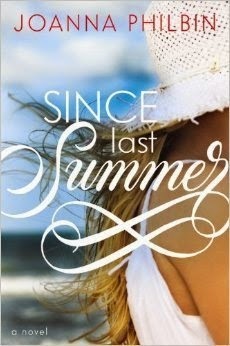
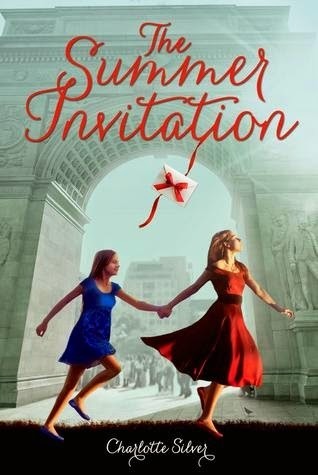
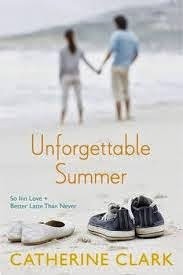
Since Last Summer by Joanna Philbin (second in series): Eighteen-year-olds Rory McShane and Isabel Rule are back for another summer in East Hampton, but their friendship is put to the test as each girl deals with boyfriends, summer jobs, and family issues.
The Summer Invitation by Cynthia Silver: When Franny and her older sister Valentine are summoned by their aunt Theodora from foggy San Francisco to sunny New York City for one summer, they unearth secrets about Aunt Theo's romantic past and even have a few romantic adventures of their own.
Unforgettable Summer by Catherine Clark (this is a reissue bind up of two of Clark's older titles, So Inn Love and Better Latte Than Never): Liza McKenzie has landed her dream job working at the Tides Inn. It will be a summer of sun, friends, and independence -- if only she can figure out a way to become part of the "inn" crowd. But fitting in isn't always easy, especially when the hotel's cutest employee is sending mixed messages...

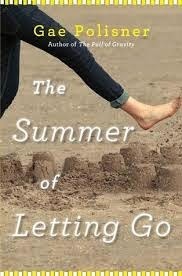
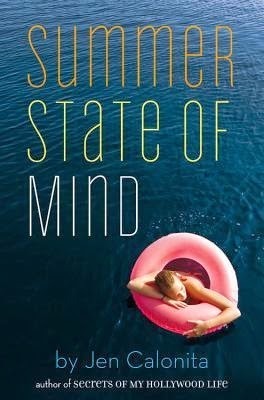
Summer Love by Jill Santopolo: A unique romance novel whereby readers are prompted to choose how to proceed with the plot, leading them to one of eleven different love interests and thirteen possible endings.
The Summer of Letting Go by Gae Polisner: Four years after her brother Simon drowned while in her charge, Francesca, now fifteen, begins to move on after a summer caring for Frankie, who seems to be Simon reincarnated, and getting closer to her best friend's boyfriend.
Summer State of Mind by Jen Calonita: Spoiled, yet lovable fifteen-year-old Harper McCallister is sent to sleepaway camp where she is an outcast at first but eventually finds a way to make her mark, gaining new perspectives on friendship and life in general.
Two titles I needed to include on the list but don't maybe fit the feel of the rest of the list are these two: one that's a non-fiction title and one where the author's last name is . . . Summer.
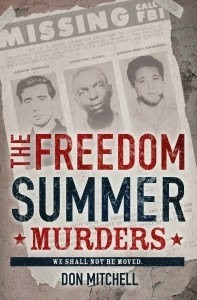
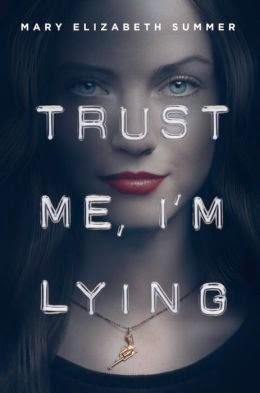
The Freedom Summer Murders by Don Mitchell: Coinciding with the fiftieth anniversary of the Freedom Summer murders, traces the events surrounding the KKK lynching of three young civil rights activists who were trying to register African Americans for the vote.
Trust Me, I'm Lying by Mary Elizabeth Summer (October 14): Having learned to be a master con artist from her father, Julep Dupree pays expenses at her exclusive high school by fixing things for fellow students, but she will need their help when her father disappears.







 Related StoriesMaking a List & Checking it Twice: Bucket Lists and More in YAFour Short(er) Contemporary YA Reviews: Jennifer Brown, Katrina Leno, Steve Brezenoff, and Amanda MacielUnfinished Books
Related StoriesMaking a List & Checking it Twice: Bucket Lists and More in YAFour Short(er) Contemporary YA Reviews: Jennifer Brown, Katrina Leno, Steve Brezenoff, and Amanda MacielUnfinished Books
How about a roundup of YA titles out this year that feature "summer" in the title? Some are out during the summer, some are set during the summer, and maybe some have nothing to do with summer at all (I doubt that a bit, but it's possible since I haven't read all of these). It's possible I'll miss a few titles, so feel free to chime in with other 2014 YA "summer" titles you know about.
All descriptions are via WorldCat. I've included release dates for those titles not yet available.



Open Road Summer by Emery Lord: Follows seventeen-year-old Reagan as she tries to escape heartbreak and a bad reputation by going on tour with her country superstar best friend--only to find more trouble as she falls for the surprisingly sweet guy hired to pose as the singer's boyfriend.
The Summer I Found You by Jolene Perry: Kate, seeking distraction from her recent diabetes diagnosis, begins dating Aidan, a young veteran who lost an arm in Afghanistan, and the two soon realize that they might mean more to each other than they first thought.
The Summer I Wasn't Me by Jessica Verdi: Ever since her mom found out she was in love with a girl, seventeen-year-old Lexi's afraid that what's left of her family is going to fall apart for good. New Horizons summer camp promises a new life for Lexi--she swears she can change. She can learn to like boys. But denying her feelings is harder than she thinks.



Summer of Yesterday by Gaby Triana: As she struggles with her parents' divorce, seventeen-year-old Haley is mysteriously transported to a theme park in the past where she finds love and meets her teenaged mother and father.
Summer on the Short Bus by Bethany Crandell: Cricket Montgomery has been thrown under the short bus. Shipped off to a summer camp by her father, Cricket is forced to play babysitter to a bunch of whiny kids--or so she thinks. When she realizes this camp is actually for teens with special needs, Cricket doubts she has what it takes to endure twenty-four hours, let alone two weeks. Thanks to her dangerously cute co-counselor, Quinn, there may be a slim chance for survival. However, between the campers' unpredictability and disregard for personal space, Cricket's limits get pushed. She will have to decide if suffering through her own handicapped hell is worth a summer romance--and losing her sanity.
This One Summer by Jillian and Mariko Tamaki: Rose and her parents have been going to Awago Beach since she was a little girl. It's her summer getaway, her refuge. Her friend Windy is always there, too, like the little sister she never had, completing her summer family. But this summer is different. Rose's mom and dad won't stop fighting, and Rose and Windy have gotten tangled up in a tragedy-in-the-making in the small town of Awago Beach. It's a summer of secrets and heartache, and it's a good thing Rose and Windy have each other.



Since Last Summer by Joanna Philbin (second in series): Eighteen-year-olds Rory McShane and Isabel Rule are back for another summer in East Hampton, but their friendship is put to the test as each girl deals with boyfriends, summer jobs, and family issues.
The Summer Invitation by Cynthia Silver: When Franny and her older sister Valentine are summoned by their aunt Theodora from foggy San Francisco to sunny New York City for one summer, they unearth secrets about Aunt Theo's romantic past and even have a few romantic adventures of their own.
Unforgettable Summer by Catherine Clark (this is a reissue bind up of two of Clark's older titles, So Inn Love and Better Latte Than Never): Liza McKenzie has landed her dream job working at the Tides Inn. It will be a summer of sun, friends, and independence -- if only she can figure out a way to become part of the "inn" crowd. But fitting in isn't always easy, especially when the hotel's cutest employee is sending mixed messages...



Summer Love by Jill Santopolo: A unique romance novel whereby readers are prompted to choose how to proceed with the plot, leading them to one of eleven different love interests and thirteen possible endings.
The Summer of Letting Go by Gae Polisner: Four years after her brother Simon drowned while in her charge, Francesca, now fifteen, begins to move on after a summer caring for Frankie, who seems to be Simon reincarnated, and getting closer to her best friend's boyfriend.
Summer State of Mind by Jen Calonita: Spoiled, yet lovable fifteen-year-old Harper McCallister is sent to sleepaway camp where she is an outcast at first but eventually finds a way to make her mark, gaining new perspectives on friendship and life in general.
Two titles I needed to include on the list but don't maybe fit the feel of the rest of the list are these two: one that's a non-fiction title and one where the author's last name is . . . Summer.


The Freedom Summer Murders by Don Mitchell: Coinciding with the fiftieth anniversary of the Freedom Summer murders, traces the events surrounding the KKK lynching of three young civil rights activists who were trying to register African Americans for the vote.
Trust Me, I'm Lying by Mary Elizabeth Summer (October 14): Having learned to be a master con artist from her father, Julep Dupree pays expenses at her exclusive high school by fixing things for fellow students, but she will need their help when her father disappears.







 Related StoriesMaking a List & Checking it Twice: Bucket Lists and More in YAFour Short(er) Contemporary YA Reviews: Jennifer Brown, Katrina Leno, Steve Brezenoff, and Amanda MacielUnfinished Books
Related StoriesMaking a List & Checking it Twice: Bucket Lists and More in YAFour Short(er) Contemporary YA Reviews: Jennifer Brown, Katrina Leno, Steve Brezenoff, and Amanda MacielUnfinished Books
Published on June 08, 2014 22:00
June 5, 2014
Four Short(er) Contemporary YA Reviews: Jennifer Brown, Katrina Leno, Steve Brezenoff, and Amanda Maciel
I've definitely not been reading at the pace I usually do this year. Part of it is life stuff, and part of it is that I haven't been finding myself falling in love with a whole lot of books. I've liked what I've read well enough, but little has consumed my attention completely. I keep picking up books and hoping that it'll be the one which changes my reading and gets me back on track, but it hasn't happened yet. I'm trying to really respect that, especially as my normal tactics for getting out of a slump -- changing genres, changing formats, diving into things I'm really eager about -- hasn't worked, either.
That's probably not an ideal introduction to a series of short book reviews, but I wanted to get that out there because I've found that my enthusiasm for writing reviews has waned a bit in that light, too. Which isn't to say none of the books I'm about to talk about are bad -- in fact, one of these books will be making my best of 2014 list, for sure -- but rather, it's to say I'm less interested in a lengthy discussion of these titles and more interested in a quick look at what worked and didn't work.


Torn Away by Jennifer Brown (available now) might be my favorite of Brown's books to date. The story follows what happens in the wake of a devastating tornado that not only tears apart Jersey's home, but leaves her without a mother and a little sister. Without shelter or her family, she's sent to live with her father who is terrible and she's put into a situation where her own life isn't safe. In that environment, she's unable to do anything she needs to do for herself on a daily basis, let alone do what she needs to do in order to properly grieve the immense losses in her life.
Fortunately, things change when she's able to move in with her material grandparents, who she never met because her mother did not get along with them. In this move, Jersey comes to have space to not only grieve, but she's able to work through building new relationships with people who she had been led to believe didn't care about her nor her well-being. That process exposes her to a host of truths about her mother. Brown does an excellent job of not only exploring the depth of grief that Jersey has to work through -- she lost everything here -- but she also does an incredible job of exploring the idea of perception vs. reality when it comes to people who are or are not in your life. This is a complex family with a layers upon layers of relationship twists and turns, and while many could easily say that it's "too complicated," I found it refreshingly real and honest. Brown gets some extra points in this story because Jersey isn't a skinny girl, but her fuller body is never, ever an issue. She doesn't hate herself nor is she uncomfortable in her skin. Instead, this fact about her -- and it's a fact about her -- is woven into the character development in subtle and authentic ways.
Hand Torn Away to readers who have loved Brown's work in the past, appreciate complex family dynamics, or who love a story about disasters. This could be an interesting pairing with Lara Zielin's The Waiting Sky.
Katrina Leno's The Half Life of Molly Pierce, available July 8, was a title I saw pop up as a read alike to Stephanie Kuehn's forthcoming Complicit, which I read and loved (the review will come later this month). The comparison isn't without merits, but in many ways, that comparison was a heavy one: it put some high expectations on Leno's book for me, since Kuehn's knocked it out of the park.
I can't talk a whole lot about this book since it would be all spoiler, but this psychological thriller is about mental illness, and I saw the twist of the story coming one chapter in. It's hard when you have that idea in mind to not spend the rest of the novel gathering evidence for your conclusion and feeling both satisfied and frustrated when you come to the end and see you were right. It's satisfying because you as a reader knew all along but it's frustrating because the strings to get from point A to point B are too clear in the novel. It felt too obvious to me from the onset, and I'd hoped that my intuition would be wrong, but it wasn't.
This is a book about a girl who has little memory of her past, and as she's putting it all together with the help of those around her, the story becomes more complex and much scarier for Molly. Could it be that she never understood who she was to begin with? Or that everything she thought she knew about herself was a lie? How do you pick up the pieces of your own experience when you can't remember much of what you've experienced?
Molly Pierce will appeal to readers who like psychological suspense, who like stories about mental illness that aren't necessarily about mental illness, and those who may want to wade into this genre of book and don't have a whole lot of experience with them, since the story will seem more fresh and surprising to them. It's a very short book and it's fast paced, so it's one that would appeal to more reluctant readers as well.
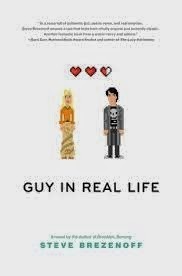

Guy In Real Life by Steve Brezenoff (available now) is, hands down, one of my favorite reads this year. The story is told through two points of view, that of Lesh and that of Svetlana. The two of them literally crash into one another on a street corner in St. Paul, Minnesota one night and from then on, they can't seem to stop bumping into one another in some capacity.
Lesh and Svetlana are anything but stereotypical. Lesh is an all-black wearing Goth-type but he's much more than his appearance may let on. He loves his music metal and he has recently fallen in deep love with video gaming. So much so that after his run-in with Svetlana, he creates an entire character in his game based off her -- he plays as a girl named after Svetlana. Real life Svetlana herself is a role playing girl and a dungeon master who embroiders skirts and listens to music like Bjork for fun. In other words, a nerd who is way more than that label would ever suggest. She's not interested in Lesh the way he is interested in her, but over the course of their getting to know one another, her feelings change.
The story alternates chapters within each of their voices, and it also offers chapters told from the video game itself as Lesh is playing. It's a bit meta in that way, but it works. At heart, Brezenoff's novel is about gender expectations and by seeing how Lesh plays the role of a girl in the gaming world, he's forced to reconsider what gender may mean in the real world. Can he build more empathy for females in the real world, as he's learned how tough it is to be a girl in the virtual world? And how does that exploration of gender impact how he relates to Svetlana?
As for Svetlana, she, too, plays against those gender roles not only in who she is and how she presents herself, but she's a leader for her role playing club and has to take on roles that don't necessarily jive with what is often expected of girls. It never comes across as a message, nor does it feel inauthentic. In fact, what makes this novel so strong and memorable is that these characters are teens we all know. They're immensely complicated, rather than defined by whatever label is slapped upon them, either by themselves or by others. "Nerd" and "Geek" and "Gamer" and "Girl" and "Guy" are all explored here in thoughtful and fun ways.
Is there romance? Sure. But I wouldn't necessarily label this one as a romance. That's one element, but it's really a book about identity and about relationship building more grandly. Pass Guy In Real Life along to readers who are gamers, who are interested in gaming culture, who love books about gender and identity, or those who dig stories told from multiple points of view. You do not have to be a gamer at all to appreciate this book nor to appreciate the chapters told through the game itself -- I'm not, and in many ways, I think because I'm not involved nor knowledgable in that world, I took a lot away from it. I have a feeling readers who loved what Rainbow Rowell tried to do in Fangirl will eat Brezenoff's book up.
Last but not least is Amanda Maciel's Tease (available now). This is a bullying story told from the point of view of the alleged bully, who played a significant role in the suicide of a girl at her school. Sara, the main character, slowly reveals what happened at school which caused her to have to face a judge and potential sentencing for Emma's death. Told in alternating time lines -- the present and the past -- we get a glimpse into all of the things that Emma did which led Sara to act in the manner she did.
What makes Maciel's novel not an average bullying novel is that it's told from the point of view of the girl being blamed. Sara isn't the hero here. She's the one facing serious charges in the wake of Emma's suicide. Where she shouldn't be a sympathetic character, though, she does become one readers do sympathize. We see why she took the actions she did and why she bullied Sara as she did. Never are readers expected to forgive her actions; instead, we're given the other side of the story, the one which rarely gets told (the only other novel I can think of which allows the bully's voice to be the one we hear is Courtney Summers's Some Girls Are, which is certainly a great read alike to Maciel's book).
In reading from Sara's point of view, I found myself conflicted. She did some awful, terrible things to Emma. But she was also not the person coming up with these ideas. She was being fed ideas and encouraged to pursue them by another girl, and in Sara's desperation to maintain that friendship and save her own face, she acted. It doesn't make her guilt free, but it changes the motivation behind her actions. I felt bad for Sara because she did those things to keep her own reputation going and to protect her own interests. It was far less about ruining Emma's life and more about keeping her own secure.
However, I found the ending of this book exceptionally disappointing. I was all on board and really enjoying the conflicting emotions I had in reading this until the very end when -- spoiler -- Sara is redeemed entirely. She gets a way-too-easy out of the story, and I never once believed that she felt the way she claims she did. The way it's written, too, doesn't invite the interpretation that she might be sarcastic or insincere; it's too clean, too clear-cut, and too pretty a bow on an otherwise powerful read about bullying culture. I'd still heartily recommend Tease, especially for readers who like intense, thought-provoking novels that will spur discussion and discomfort. But that ending was a total disappointment in an otherwise noteworthy book.






 Related StoriesThe Klaatu Terminus by Pete HautmanWhile We Run by Karen HealeyLife By Committee by Corey Ann Haydu
Related StoriesThe Klaatu Terminus by Pete HautmanWhile We Run by Karen HealeyLife By Committee by Corey Ann Haydu
That's probably not an ideal introduction to a series of short book reviews, but I wanted to get that out there because I've found that my enthusiasm for writing reviews has waned a bit in that light, too. Which isn't to say none of the books I'm about to talk about are bad -- in fact, one of these books will be making my best of 2014 list, for sure -- but rather, it's to say I'm less interested in a lengthy discussion of these titles and more interested in a quick look at what worked and didn't work.


Torn Away by Jennifer Brown (available now) might be my favorite of Brown's books to date. The story follows what happens in the wake of a devastating tornado that not only tears apart Jersey's home, but leaves her without a mother and a little sister. Without shelter or her family, she's sent to live with her father who is terrible and she's put into a situation where her own life isn't safe. In that environment, she's unable to do anything she needs to do for herself on a daily basis, let alone do what she needs to do in order to properly grieve the immense losses in her life.
Fortunately, things change when she's able to move in with her material grandparents, who she never met because her mother did not get along with them. In this move, Jersey comes to have space to not only grieve, but she's able to work through building new relationships with people who she had been led to believe didn't care about her nor her well-being. That process exposes her to a host of truths about her mother. Brown does an excellent job of not only exploring the depth of grief that Jersey has to work through -- she lost everything here -- but she also does an incredible job of exploring the idea of perception vs. reality when it comes to people who are or are not in your life. This is a complex family with a layers upon layers of relationship twists and turns, and while many could easily say that it's "too complicated," I found it refreshingly real and honest. Brown gets some extra points in this story because Jersey isn't a skinny girl, but her fuller body is never, ever an issue. She doesn't hate herself nor is she uncomfortable in her skin. Instead, this fact about her -- and it's a fact about her -- is woven into the character development in subtle and authentic ways.
Hand Torn Away to readers who have loved Brown's work in the past, appreciate complex family dynamics, or who love a story about disasters. This could be an interesting pairing with Lara Zielin's The Waiting Sky.
Katrina Leno's The Half Life of Molly Pierce, available July 8, was a title I saw pop up as a read alike to Stephanie Kuehn's forthcoming Complicit, which I read and loved (the review will come later this month). The comparison isn't without merits, but in many ways, that comparison was a heavy one: it put some high expectations on Leno's book for me, since Kuehn's knocked it out of the park.
I can't talk a whole lot about this book since it would be all spoiler, but this psychological thriller is about mental illness, and I saw the twist of the story coming one chapter in. It's hard when you have that idea in mind to not spend the rest of the novel gathering evidence for your conclusion and feeling both satisfied and frustrated when you come to the end and see you were right. It's satisfying because you as a reader knew all along but it's frustrating because the strings to get from point A to point B are too clear in the novel. It felt too obvious to me from the onset, and I'd hoped that my intuition would be wrong, but it wasn't.
This is a book about a girl who has little memory of her past, and as she's putting it all together with the help of those around her, the story becomes more complex and much scarier for Molly. Could it be that she never understood who she was to begin with? Or that everything she thought she knew about herself was a lie? How do you pick up the pieces of your own experience when you can't remember much of what you've experienced?
Molly Pierce will appeal to readers who like psychological suspense, who like stories about mental illness that aren't necessarily about mental illness, and those who may want to wade into this genre of book and don't have a whole lot of experience with them, since the story will seem more fresh and surprising to them. It's a very short book and it's fast paced, so it's one that would appeal to more reluctant readers as well.


Guy In Real Life by Steve Brezenoff (available now) is, hands down, one of my favorite reads this year. The story is told through two points of view, that of Lesh and that of Svetlana. The two of them literally crash into one another on a street corner in St. Paul, Minnesota one night and from then on, they can't seem to stop bumping into one another in some capacity.
Lesh and Svetlana are anything but stereotypical. Lesh is an all-black wearing Goth-type but he's much more than his appearance may let on. He loves his music metal and he has recently fallen in deep love with video gaming. So much so that after his run-in with Svetlana, he creates an entire character in his game based off her -- he plays as a girl named after Svetlana. Real life Svetlana herself is a role playing girl and a dungeon master who embroiders skirts and listens to music like Bjork for fun. In other words, a nerd who is way more than that label would ever suggest. She's not interested in Lesh the way he is interested in her, but over the course of their getting to know one another, her feelings change.
The story alternates chapters within each of their voices, and it also offers chapters told from the video game itself as Lesh is playing. It's a bit meta in that way, but it works. At heart, Brezenoff's novel is about gender expectations and by seeing how Lesh plays the role of a girl in the gaming world, he's forced to reconsider what gender may mean in the real world. Can he build more empathy for females in the real world, as he's learned how tough it is to be a girl in the virtual world? And how does that exploration of gender impact how he relates to Svetlana?
As for Svetlana, she, too, plays against those gender roles not only in who she is and how she presents herself, but she's a leader for her role playing club and has to take on roles that don't necessarily jive with what is often expected of girls. It never comes across as a message, nor does it feel inauthentic. In fact, what makes this novel so strong and memorable is that these characters are teens we all know. They're immensely complicated, rather than defined by whatever label is slapped upon them, either by themselves or by others. "Nerd" and "Geek" and "Gamer" and "Girl" and "Guy" are all explored here in thoughtful and fun ways.
Is there romance? Sure. But I wouldn't necessarily label this one as a romance. That's one element, but it's really a book about identity and about relationship building more grandly. Pass Guy In Real Life along to readers who are gamers, who are interested in gaming culture, who love books about gender and identity, or those who dig stories told from multiple points of view. You do not have to be a gamer at all to appreciate this book nor to appreciate the chapters told through the game itself -- I'm not, and in many ways, I think because I'm not involved nor knowledgable in that world, I took a lot away from it. I have a feeling readers who loved what Rainbow Rowell tried to do in Fangirl will eat Brezenoff's book up.
Last but not least is Amanda Maciel's Tease (available now). This is a bullying story told from the point of view of the alleged bully, who played a significant role in the suicide of a girl at her school. Sara, the main character, slowly reveals what happened at school which caused her to have to face a judge and potential sentencing for Emma's death. Told in alternating time lines -- the present and the past -- we get a glimpse into all of the things that Emma did which led Sara to act in the manner she did.
What makes Maciel's novel not an average bullying novel is that it's told from the point of view of the girl being blamed. Sara isn't the hero here. She's the one facing serious charges in the wake of Emma's suicide. Where she shouldn't be a sympathetic character, though, she does become one readers do sympathize. We see why she took the actions she did and why she bullied Sara as she did. Never are readers expected to forgive her actions; instead, we're given the other side of the story, the one which rarely gets told (the only other novel I can think of which allows the bully's voice to be the one we hear is Courtney Summers's Some Girls Are, which is certainly a great read alike to Maciel's book).
In reading from Sara's point of view, I found myself conflicted. She did some awful, terrible things to Emma. But she was also not the person coming up with these ideas. She was being fed ideas and encouraged to pursue them by another girl, and in Sara's desperation to maintain that friendship and save her own face, she acted. It doesn't make her guilt free, but it changes the motivation behind her actions. I felt bad for Sara because she did those things to keep her own reputation going and to protect her own interests. It was far less about ruining Emma's life and more about keeping her own secure.
However, I found the ending of this book exceptionally disappointing. I was all on board and really enjoying the conflicting emotions I had in reading this until the very end when -- spoiler -- Sara is redeemed entirely. She gets a way-too-easy out of the story, and I never once believed that she felt the way she claims she did. The way it's written, too, doesn't invite the interpretation that she might be sarcastic or insincere; it's too clean, too clear-cut, and too pretty a bow on an otherwise powerful read about bullying culture. I'd still heartily recommend Tease, especially for readers who like intense, thought-provoking novels that will spur discussion and discomfort. But that ending was a total disappointment in an otherwise noteworthy book.







 Related StoriesThe Klaatu Terminus by Pete HautmanWhile We Run by Karen HealeyLife By Committee by Corey Ann Haydu
Related StoriesThe Klaatu Terminus by Pete HautmanWhile We Run by Karen HealeyLife By Committee by Corey Ann Haydu
Published on June 05, 2014 22:00
June 4, 2014
Unfinished Books
Ask any reader what their personal policy is on finishing vs. not finishing books and you'll likely be drawn into a long conversation. As for myself, I don't have any specific rule (such as a 50-pages-to-hook-me-otherwise-I-put-it-down-rule) concerning giving up on books. Sometimes I'll set a book down that I thought I was enjoying to eat dinner, forget about it, remember it months later, and never feel compelled to pick it up again. Sometimes I'll plow through a book I dislike for no discernible reason.
Once I've decided to give up on a book, though, I make my decision final: I remove my bookmark. I still have books with bookmarks on my shelf that I haven't touched in years (no library books, I promise!), but I think I'd like to finish them someday. Maybe.
Below are a several books I've given up on throughout the years; none of them have a bookmark in them anymore. Links lead to my comments on Goodreads. (Fair warning: my Goodreads reviews are much more off-the-cuff than my reviews here. No swearing - I think - but certainly blunter. And you get to see how much my reviewing style has evolved over the years, including what old prejudices I held back in 2008 when I first started using Goodreads.) What books have you given up on recently?
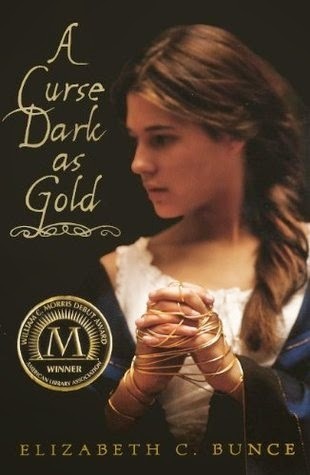
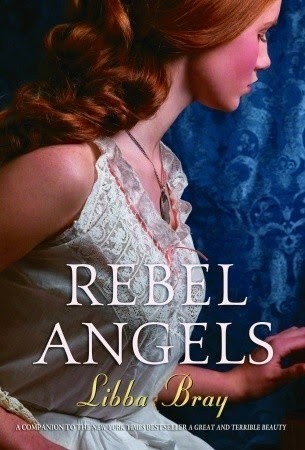
A Curse Dark as Gold by Elizabeth C. Bunce
I got through most of this book and then just decided I didn't care enough about the characters to finish. I found the plot quite slow and boring, despite my love for reworked fairy tales. I tried another of Bunce's books later with the same experience.
Rebel Angels by Libba Bray
I quite liked the first book in this series, A Great and Terrible Beauty. It was a fun bit of historical fantasy with some unique plotting and interesting characterization. By the time I got into the second book, though, I was tired of the characters, who didn't seem to maintain any continuity from one page to the next. It seemed a bit overblown and disjointed to me, too. I've read others by Bray since then and I've determined her writing probably just isn't for me.
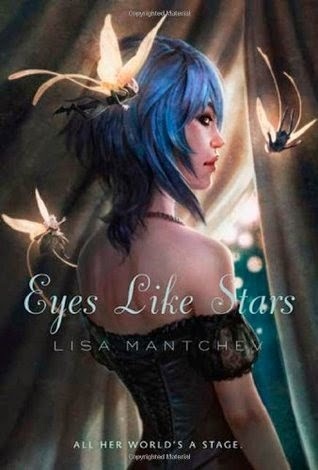
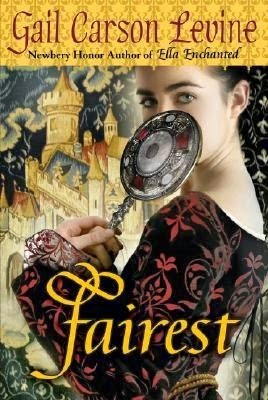
Eyes Like Stars by Lisa Mantchev
I'm actually having a hard time remembering what this was even about. My Goodreads review simply reads "Boring. So boring." That's about all I can recall of it.
Fairest by Gail Carson Levine
I think Ella Enchanted is the only thing by Levine that I really like. The present tense in Fairest grated on me so badly, and I had problems with the premise from the very beginning.
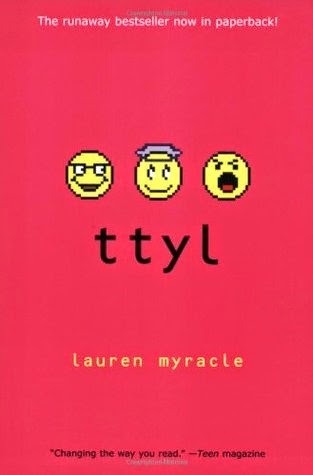
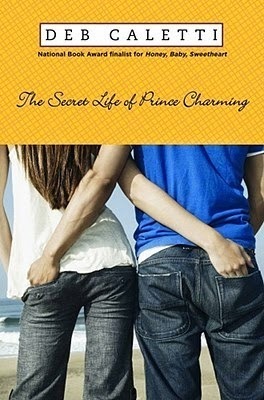
ttyl by Lauren Myracle
I didn't have any major problems with this one. I wanted to read if to see what the big deal was (it had just been challenged at my former school district). I read enough of it to get an idea, then turned it back into the library, not feeling compelled to finish.
The Secret Life of Prince Charming by Deb Caletti
I just got bored. It probably wasn't the book's fault. I tried to read this back when I still thought I enjoyed a lot of contemporary realistic fiction. Turns out I don't.
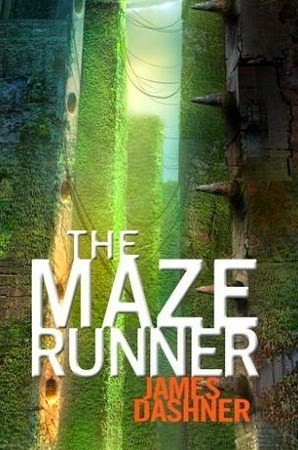
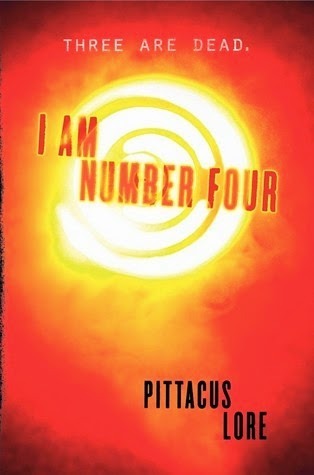
The Maze Runner by James Dashner
Again, I just got bored, although my boredom set in quite early. I don't think I even got 50 pages before I decided this was not for me. (This is also my pithiest Goodreads review ever.)
I Am Number Four by Pittacus Lore
My only real recollection of this is that the writing was so, so bad.
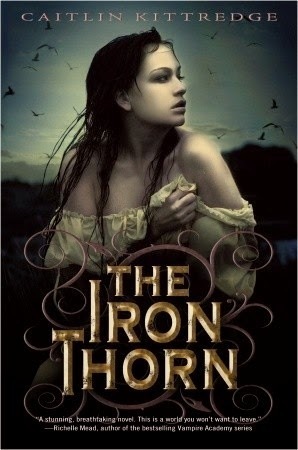
The Iron Thorn by Caitlin Kittredge
This was such a long book and the idea of finishing it made me feel sad. So I didn't. Apparently one of my pet peeves is when characters aren't consistent. Growth is great, but when they act like two different people, we have a problem.







 Related StoriesThe Klaatu Terminus by Pete HautmanGet Genrefied: Magical RealismMaking a List & Checking it Twice: Bucket Lists and More in YA
Related StoriesThe Klaatu Terminus by Pete HautmanGet Genrefied: Magical RealismMaking a List & Checking it Twice: Bucket Lists and More in YA
Once I've decided to give up on a book, though, I make my decision final: I remove my bookmark. I still have books with bookmarks on my shelf that I haven't touched in years (no library books, I promise!), but I think I'd like to finish them someday. Maybe.
Below are a several books I've given up on throughout the years; none of them have a bookmark in them anymore. Links lead to my comments on Goodreads. (Fair warning: my Goodreads reviews are much more off-the-cuff than my reviews here. No swearing - I think - but certainly blunter. And you get to see how much my reviewing style has evolved over the years, including what old prejudices I held back in 2008 when I first started using Goodreads.) What books have you given up on recently?


A Curse Dark as Gold by Elizabeth C. Bunce
I got through most of this book and then just decided I didn't care enough about the characters to finish. I found the plot quite slow and boring, despite my love for reworked fairy tales. I tried another of Bunce's books later with the same experience.
Rebel Angels by Libba Bray
I quite liked the first book in this series, A Great and Terrible Beauty. It was a fun bit of historical fantasy with some unique plotting and interesting characterization. By the time I got into the second book, though, I was tired of the characters, who didn't seem to maintain any continuity from one page to the next. It seemed a bit overblown and disjointed to me, too. I've read others by Bray since then and I've determined her writing probably just isn't for me.


Eyes Like Stars by Lisa Mantchev
I'm actually having a hard time remembering what this was even about. My Goodreads review simply reads "Boring. So boring." That's about all I can recall of it.
Fairest by Gail Carson Levine
I think Ella Enchanted is the only thing by Levine that I really like. The present tense in Fairest grated on me so badly, and I had problems with the premise from the very beginning.


ttyl by Lauren Myracle
I didn't have any major problems with this one. I wanted to read if to see what the big deal was (it had just been challenged at my former school district). I read enough of it to get an idea, then turned it back into the library, not feeling compelled to finish.
The Secret Life of Prince Charming by Deb Caletti
I just got bored. It probably wasn't the book's fault. I tried to read this back when I still thought I enjoyed a lot of contemporary realistic fiction. Turns out I don't.


The Maze Runner by James Dashner
Again, I just got bored, although my boredom set in quite early. I don't think I even got 50 pages before I decided this was not for me. (This is also my pithiest Goodreads review ever.)
I Am Number Four by Pittacus Lore
My only real recollection of this is that the writing was so, so bad.

The Iron Thorn by Caitlin Kittredge
This was such a long book and the idea of finishing it made me feel sad. So I didn't. Apparently one of my pet peeves is when characters aren't consistent. Growth is great, but when they act like two different people, we have a problem.







 Related StoriesThe Klaatu Terminus by Pete HautmanGet Genrefied: Magical RealismMaking a List & Checking it Twice: Bucket Lists and More in YA
Related StoriesThe Klaatu Terminus by Pete HautmanGet Genrefied: Magical RealismMaking a List & Checking it Twice: Bucket Lists and More in YA
Published on June 04, 2014 22:00
June 3, 2014
The Klaatu Terminus by Pete Hautman
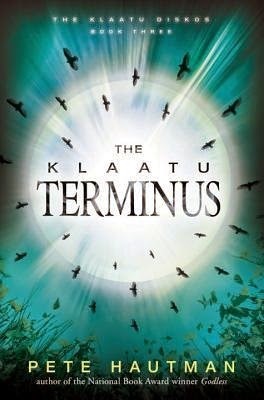 It's no secret I'm a big fan of Pete Hautman's Klaatu Diskos' trilogy. The final book, the
Klaatu Terminus
, was released a few weeks ago, and I'm happy to say I enjoyed it just as much as the other two.
It's no secret I'm a big fan of Pete Hautman's Klaatu Diskos' trilogy. The final book, the
Klaatu Terminus
, was released a few weeks ago, and I'm happy to say I enjoyed it just as much as the other two.Part of the reason I love this trilogy so much is that it's weird. But its weirdness has a purpose. I think the best explanation I can give for it is this: It's like the television show Lost, where a series of bizarre and inexplicable things keep happening, except that unlike Lost, things actually do get explained and resolved in the end. All the weird, bizarre things that happened coalesce into something that makes you go "Oh! I get it all now! How cool!" (It is super cool.) Everything comes together. And then it makes you want to go back and re-read all of the books so you can pick up on every little thing and make your mental picture even more complete.
It seems like Hautman had a plan for the plot from the beginning, which I appreciate. (Or if he didn't have a plan, he found a way to make it work anyhow. I'm not sure which is more impressive.) I talk a lot about the crazy plot in this series, but I don't want it to overshadow the excellent characterization or writing or any of that other good stuff. (I feel like I have to mention that because a lot of SFF gets unjustly painted as big on plot, little on "substance.")
The Klaatu Terminus focuses mainly on Kosh, telling the story from his point of view. We get a lot of flashbacks to when Kosh was a seventeen year old in the 90s, falling in love with his older brother's fiancee. Normally I dislike flashbacks, but these were integral to the plot (not merely character-building exercises), and Hautman writes them so well. Plus, Kosh (born with the name Curtis) mentions casually that he took the name Kosh from a currently-airing tv show and I about died. (The tv show can only be Babylon 5, for which I hold a possibly unreasonable amount of love.) I guess you could say I'm a cheap date for this kind of book.
While a lot of the story takes place in the 90s, we also get some present-day stuff too. Or rather, we get some stuff from when Kosh is an adult and Lia and Tucker are teenagers. They spend time in 2012, but they also spend a lot of time in the future...and the far future. Tucker and Lia travel through time intentionally in this book, as opposed to the accidental jumps of the previous volumes. They're trying to piece together everything they've encountered - the Boggsians, the Lambs of September, the timesweeps, the klaatu, the diskos themselves - while also evading people who are out to kill them (naturally). It's all delightfully bizarre and it all makes wonderful, wonderful sense at the end.
I don't think I can emphasize enough how satisfying this conclusion is; readers who have invested their time in the first two books won't be disappointed. The trilogy as a whole is terrific for teens who love a good sci fi adventure, and I'd absolutely hand it to teens who love reading about time travel and the various paradoxes such a thing may create. It's unlike anything I've read, really, so hand this series to readers who crave something new and different and strange.
Final copy checked out from my local library.







 Related StoriesWhile We Run by Karen HealeyLife By Committee by Corey Ann HayduThe Ring and the Crown by Melissa de la Cruz
Related StoriesWhile We Run by Karen HealeyLife By Committee by Corey Ann HayduThe Ring and the Crown by Melissa de la Cruz
Published on June 03, 2014 22:00
June 2, 2014
Get Genrefied: Magical Realism
Kimberly and I are on the same page when it comes to writing about genre, which we've been doing through this Get Genrefied series. It's so much fun. I've been especially appreciating thinking about genre in terms of my own reading experiences. I like to think about the first time I read a book in a particular genre and how it may or may not have impacted my feelings toward that genre.
This month, we're tackling magical realism. It's a genre that has specific roots that are fascinating and it's a genre that's been popping up more and more throughout YA fiction. It's also a genre I happen to have a lot of warm feelings toward, thanks to the first time I read a book that could fall into this genre: Laura Esquivel's Like Water for Chocolate. This book was one I obsessed over in high school and still think about periodically. I love how real it is and yet what made the book so powerful for me was that it was completely unreal too.
Magical realism is a genre that flirts with a number of genre lines and expectations. It's not fantasy, nor is it science fiction. It's not wholly realistic and it's also not entirely historical. It blends all of these things and it touches on none of them at the same time. David Carr, in an article written for Novelist, notes that magical realism "contradicts the reader's normal expectation of time, space, or gravity, unexpectedly recounting secular miracles and human enchantments as everyday occasions." In other words, the world within a novel defined as magical realism is as real as ours and the magical things that happen within that world feel real because they're just part of that world. Things we might otherwise find weird or jarring are normal within the pages of the story.
What readers tend to find appealing about magical realism is that it's a blend of the real world and the possible/impossible world. There's a big sense of mystery but not in the sense of needing a resolution; it's inviting readers to question what is or isn't magical about the world around us and it encourages a sense of wonder. There's not necessarily world-building that happens. The magic is built right into the world around us instead, adding a touch of the surreal to the everyday. To quote Carr again, "The strange and confounding moments of this imaginative and adventurous literary genre may appeal to strong readers who seek intellectual pleasure beyond reading pure fantasy, readers who do not depend on literal explanations for satisfying literary experiences, and yet who are not escapist readers." While I don't love some of the qualifiers in this explanations, the take away is that magical realism appeals to those who aren't necessarily seeking a story set outside our own world and those who don't require an explanation for strange occurrences within a real world setting. It's a genre that's subtle, rather than overt.
The genre has roots in Latin American literature, though it's been around for a long time. Gabriel Garcia Marquez is credited with writing the novel that best defines all of the features of magical realism in 100 Years of Solitude. Other authors who have written well-known magical realism novels you may be familiar with include Laura Esquivel, Isabel Allende, Jorge Luis Borges, as well as Italo Calvino, Alice Hoffman, and Pete Hamill. Other authors who have been credited with writing magical realism prior to the real growth and recognition of the genre in the 20th century include Edgar Allan Poe, Franz Kafka, and Jonathan Swift. In terms of very contemporary writers, Aimee Bender is another magical realist writer and Haruki Murakami is as well (both happen to fall on my list of personal favorite authors because they do this genre in such interesting ways).
While it's been around in adult fiction for a while, magical realism hasn't been huge in young adult fiction. Part of why that may be is because magical realism is simply hard to define. Another part might be that books which could be labeled magical realism may not be labeled because whether they're magical realism or straight realism is left up to the reader and his/her interpretation of the book. What's equally interesting is that in doing research on magical realism in YA fiction, there's surprisingly little being said about it. It exists, but there's not a whole lot, and we're not talking a whole lot about it.
Here's a roundup of some of those worthwhile reads:
YA Highway talks about what magical realism may or may not be (back in 2011!). This is an excellent exploration of the world of magical realism in children's lit, especially the role of Chicano/a writers in growing and crafting the genre. An older interview with a literary agent about magical realism breaks down the term an offers titles of books that fall within the genre. I'm not entirely sure I'd call magical realism a subgenre rather than one in its own right, in part because of the reasons why this post explains ("it's either general or speculative, depending on how you choose to see it"). But I like the tropes discussion here and the titles offered. At The Enchanted Inkpot, this interview delves into the genre a bit more, though I find the idea that fantasy can't also be literary fiction one I disagree with.
In short, magical realism is complex, people are interested in it, people are writing about it, but people aren't necessarily entirely clear on how to best define what it is. It's literary writing that weaves magic into the everyday with a thread of history.
Here's a roundup of YA titles that could be defined as magical realism. Of course, what we're calling magical realism may be wholly realistic to some readers and may be entirely speculative or fantastic to others. Because it seems like a genre that isn't huge within YA, we pulled recent and backlist titles to flesh this out. All descriptions are from WorldCat, and we would be eager to not only hear about other titles which might be classified as magical realism in YA, but we'd love to hear about other sites or resources that have discussed this elusive and appealing category of fiction.

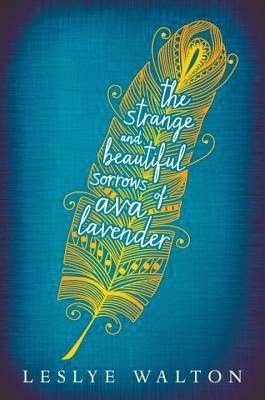
Imaginary Girls by Nova Ren Suma: Two years after sixteen-year-old Chloe discovered classmate London's dead body floating in a Hudson Valley reservoir, she returns home to be with her devoted older sister Ruby, a town favorite, and finds that London is alive and well, and that Ruby may somehow have brought her back to life and persuaded everyone that nothing is amiss.
The Strange and Beautiful Sorrows of Ava Lavender by Leslye Walton: Born with bird wings, Ava Lavender is well aware that love has long made fools of her family. When pious Nathaniel Sorrows mistakes her bird wings for angel wings, 16-year-old Ava faces the man's growing obsession, which comes to a head with the rain and feathers that fly through the air during a nighttime summer solstice celebration.
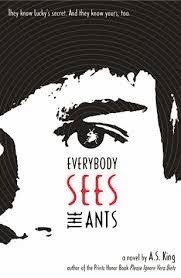
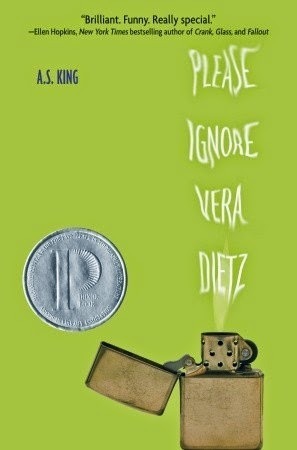
Everybody Sees The Ants by AS King: Overburdened by his parents' bickering and a bully's attacks, fifteen-year-old Lucky Linderman begins dreaming of being with his grandfather, who went missing during the Vietnam War, but during a visit to Arizona, his aunt and uncle and their beautiful neighbor, Ginny, help him find a new perspective.
Please Ignore Vera Dietz by AS King: When her best friend, whom she secretly loves, betrays her and then dies under mysterious circumstances, high school senior Vera Dietz struggles with secrets that could help clear his name.
There is a very solid argument in that all of AS King's books could be magical realism, too, but I pulled out two outstanding examples.
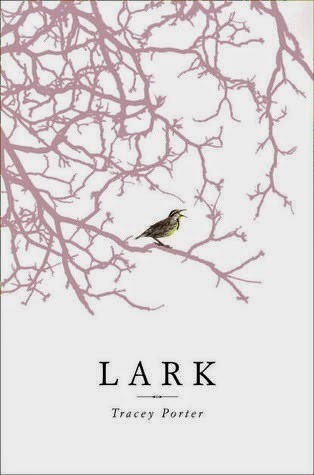
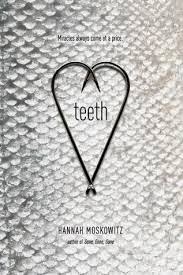
Lark by Tracey Porter: When sixteen-year-old Lark is murdered, she, her childhood best friend Eva, and a girl she used to babysit, Nyetta, find themselves facing hard truths about their lives and seeking a way to move on.
Teeth by Hannah Moskowitz: Rudy's life is flipped upside-down when his family moves to a remote, magical island in a last attempt to save his sick younger brother, Dylan. While Dylan recovers, Rudy sinks deeper and deeper into his loneliness.
*In my reading, Teeth is straight fantasy. But I've seen this pop up on multiple lists as being magical realism, so I'm including it because I think it's a case of personal definition of genre.
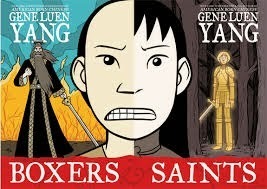
Boxers by Gene Luen Yang: In China in 1898 bands of foreign missionaries and soldiers roam the countryside, bullying and robbing Chinese peasants. Little Bao has had enough: harnessing the powers of ancient Chinese gods, he recruits an army of Boxers--commoners trained in kung fu who fight to free China from "foreign devils."
Saints by Gene Luen Yang: China, 1898. An unwanted and unwelcome fourth daughter, Four-Girl isn't even given a proper name by her family when she's born. She finally finds friendship-- and a name, Vibiana -- in the most unlikely of places: Christianity. But China is a dangerous place for Christians. The Boxer Rebellion is in full swing, and bands of young men roam the countryside, murdering Westerners and Chinese Christians alike. Torn between her nation and her Christian friends, Vibiana will have to decide where her true loyalties lie-- and whether she is willing to die for her faith.
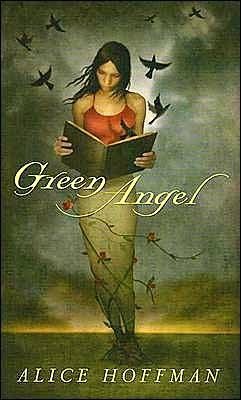
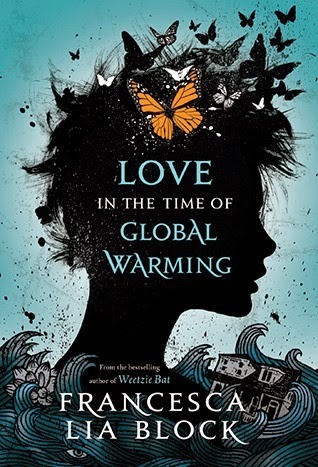
Green Angel (and sequels) by Alice Hoffman: Haunted by grief and by her past after losing her family in a fire, fifteen-year-old Green retreats into her ruined garden as she struggles to survive emotionally and physically on her own.
Love in the Time of Global Warming by Francesca Lia Block: After a devastating earthquake destroys the West Coast, causing seventeen-year-old Penelope to lose her home, her parents, and her ten-year-old brother, she navigates a dark world, holding hope and love in her hands and refusing to be defeated.
Both Hoffman and Block have written many titles that would be considered magical realism. Hoffman's have been primarily adult fiction, but most of Block's are YA.
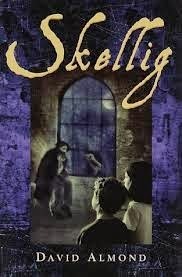
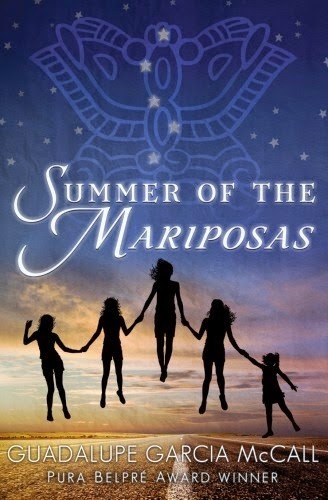
Skellig by David Almond: Unhappy about his baby sister's illness and the chaos of moving into a dilapidated old house, Michael retreats to the garage and finds a mysterious stranger who is something like a bird and something like an angel.
Summer of the Mariposas by Guadalupe Garcia McCall: In an adventure reminiscent of Homer's Odyssey, fifteen-year-old Odilia and her four younger sisters embark on a journey to return a dead man to his family in Mexico, aided by La Llorona, but impeded by a witch, a warlock, chupacabras, and more.
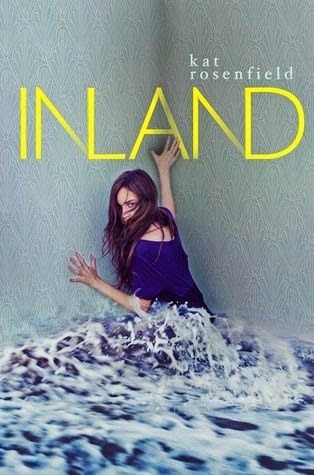
Inland by Kat Rosenfield (June 12): Returning to the coast after living in the Midwest, Callie's mysterious illness disappears, but when the water near her house begins to call her, she uncovers dangerous family secrets and jeopardizes everything and everyone she holds dear.
Bone Gap by Laura Ruby (January 2015): Eighteen-year-old Finn, an outsider in his quiet Midwestern town, is the only witness to the abduction of town favorite Roza, but his inability to distinguish between faces makes it difficult for him to help with the investigation, and subjects him to even more ridicule and bullying.






 Related StoriesMaking a List & Checking it Twice: Bucket Lists and More in YAMay Debut YA NovelsWhile We Run by Karen Healey
Related StoriesMaking a List & Checking it Twice: Bucket Lists and More in YAMay Debut YA NovelsWhile We Run by Karen Healey
This month, we're tackling magical realism. It's a genre that has specific roots that are fascinating and it's a genre that's been popping up more and more throughout YA fiction. It's also a genre I happen to have a lot of warm feelings toward, thanks to the first time I read a book that could fall into this genre: Laura Esquivel's Like Water for Chocolate. This book was one I obsessed over in high school and still think about periodically. I love how real it is and yet what made the book so powerful for me was that it was completely unreal too.
Magical realism is a genre that flirts with a number of genre lines and expectations. It's not fantasy, nor is it science fiction. It's not wholly realistic and it's also not entirely historical. It blends all of these things and it touches on none of them at the same time. David Carr, in an article written for Novelist, notes that magical realism "contradicts the reader's normal expectation of time, space, or gravity, unexpectedly recounting secular miracles and human enchantments as everyday occasions." In other words, the world within a novel defined as magical realism is as real as ours and the magical things that happen within that world feel real because they're just part of that world. Things we might otherwise find weird or jarring are normal within the pages of the story.
What readers tend to find appealing about magical realism is that it's a blend of the real world and the possible/impossible world. There's a big sense of mystery but not in the sense of needing a resolution; it's inviting readers to question what is or isn't magical about the world around us and it encourages a sense of wonder. There's not necessarily world-building that happens. The magic is built right into the world around us instead, adding a touch of the surreal to the everyday. To quote Carr again, "The strange and confounding moments of this imaginative and adventurous literary genre may appeal to strong readers who seek intellectual pleasure beyond reading pure fantasy, readers who do not depend on literal explanations for satisfying literary experiences, and yet who are not escapist readers." While I don't love some of the qualifiers in this explanations, the take away is that magical realism appeals to those who aren't necessarily seeking a story set outside our own world and those who don't require an explanation for strange occurrences within a real world setting. It's a genre that's subtle, rather than overt.
The genre has roots in Latin American literature, though it's been around for a long time. Gabriel Garcia Marquez is credited with writing the novel that best defines all of the features of magical realism in 100 Years of Solitude. Other authors who have written well-known magical realism novels you may be familiar with include Laura Esquivel, Isabel Allende, Jorge Luis Borges, as well as Italo Calvino, Alice Hoffman, and Pete Hamill. Other authors who have been credited with writing magical realism prior to the real growth and recognition of the genre in the 20th century include Edgar Allan Poe, Franz Kafka, and Jonathan Swift. In terms of very contemporary writers, Aimee Bender is another magical realist writer and Haruki Murakami is as well (both happen to fall on my list of personal favorite authors because they do this genre in such interesting ways).
While it's been around in adult fiction for a while, magical realism hasn't been huge in young adult fiction. Part of why that may be is because magical realism is simply hard to define. Another part might be that books which could be labeled magical realism may not be labeled because whether they're magical realism or straight realism is left up to the reader and his/her interpretation of the book. What's equally interesting is that in doing research on magical realism in YA fiction, there's surprisingly little being said about it. It exists, but there's not a whole lot, and we're not talking a whole lot about it.
Here's a roundup of some of those worthwhile reads:
YA Highway talks about what magical realism may or may not be (back in 2011!). This is an excellent exploration of the world of magical realism in children's lit, especially the role of Chicano/a writers in growing and crafting the genre. An older interview with a literary agent about magical realism breaks down the term an offers titles of books that fall within the genre. I'm not entirely sure I'd call magical realism a subgenre rather than one in its own right, in part because of the reasons why this post explains ("it's either general or speculative, depending on how you choose to see it"). But I like the tropes discussion here and the titles offered. At The Enchanted Inkpot, this interview delves into the genre a bit more, though I find the idea that fantasy can't also be literary fiction one I disagree with.
In short, magical realism is complex, people are interested in it, people are writing about it, but people aren't necessarily entirely clear on how to best define what it is. It's literary writing that weaves magic into the everyday with a thread of history.
Here's a roundup of YA titles that could be defined as magical realism. Of course, what we're calling magical realism may be wholly realistic to some readers and may be entirely speculative or fantastic to others. Because it seems like a genre that isn't huge within YA, we pulled recent and backlist titles to flesh this out. All descriptions are from WorldCat, and we would be eager to not only hear about other titles which might be classified as magical realism in YA, but we'd love to hear about other sites or resources that have discussed this elusive and appealing category of fiction.


Imaginary Girls by Nova Ren Suma: Two years after sixteen-year-old Chloe discovered classmate London's dead body floating in a Hudson Valley reservoir, she returns home to be with her devoted older sister Ruby, a town favorite, and finds that London is alive and well, and that Ruby may somehow have brought her back to life and persuaded everyone that nothing is amiss.
The Strange and Beautiful Sorrows of Ava Lavender by Leslye Walton: Born with bird wings, Ava Lavender is well aware that love has long made fools of her family. When pious Nathaniel Sorrows mistakes her bird wings for angel wings, 16-year-old Ava faces the man's growing obsession, which comes to a head with the rain and feathers that fly through the air during a nighttime summer solstice celebration.


Everybody Sees The Ants by AS King: Overburdened by his parents' bickering and a bully's attacks, fifteen-year-old Lucky Linderman begins dreaming of being with his grandfather, who went missing during the Vietnam War, but during a visit to Arizona, his aunt and uncle and their beautiful neighbor, Ginny, help him find a new perspective.
Please Ignore Vera Dietz by AS King: When her best friend, whom she secretly loves, betrays her and then dies under mysterious circumstances, high school senior Vera Dietz struggles with secrets that could help clear his name.
There is a very solid argument in that all of AS King's books could be magical realism, too, but I pulled out two outstanding examples.


Lark by Tracey Porter: When sixteen-year-old Lark is murdered, she, her childhood best friend Eva, and a girl she used to babysit, Nyetta, find themselves facing hard truths about their lives and seeking a way to move on.
Teeth by Hannah Moskowitz: Rudy's life is flipped upside-down when his family moves to a remote, magical island in a last attempt to save his sick younger brother, Dylan. While Dylan recovers, Rudy sinks deeper and deeper into his loneliness.
*In my reading, Teeth is straight fantasy. But I've seen this pop up on multiple lists as being magical realism, so I'm including it because I think it's a case of personal definition of genre.

Boxers by Gene Luen Yang: In China in 1898 bands of foreign missionaries and soldiers roam the countryside, bullying and robbing Chinese peasants. Little Bao has had enough: harnessing the powers of ancient Chinese gods, he recruits an army of Boxers--commoners trained in kung fu who fight to free China from "foreign devils."
Saints by Gene Luen Yang: China, 1898. An unwanted and unwelcome fourth daughter, Four-Girl isn't even given a proper name by her family when she's born. She finally finds friendship-- and a name, Vibiana -- in the most unlikely of places: Christianity. But China is a dangerous place for Christians. The Boxer Rebellion is in full swing, and bands of young men roam the countryside, murdering Westerners and Chinese Christians alike. Torn between her nation and her Christian friends, Vibiana will have to decide where her true loyalties lie-- and whether she is willing to die for her faith.


Green Angel (and sequels) by Alice Hoffman: Haunted by grief and by her past after losing her family in a fire, fifteen-year-old Green retreats into her ruined garden as she struggles to survive emotionally and physically on her own.
Love in the Time of Global Warming by Francesca Lia Block: After a devastating earthquake destroys the West Coast, causing seventeen-year-old Penelope to lose her home, her parents, and her ten-year-old brother, she navigates a dark world, holding hope and love in her hands and refusing to be defeated.
Both Hoffman and Block have written many titles that would be considered magical realism. Hoffman's have been primarily adult fiction, but most of Block's are YA.


Skellig by David Almond: Unhappy about his baby sister's illness and the chaos of moving into a dilapidated old house, Michael retreats to the garage and finds a mysterious stranger who is something like a bird and something like an angel.
Summer of the Mariposas by Guadalupe Garcia McCall: In an adventure reminiscent of Homer's Odyssey, fifteen-year-old Odilia and her four younger sisters embark on a journey to return a dead man to his family in Mexico, aided by La Llorona, but impeded by a witch, a warlock, chupacabras, and more.

Inland by Kat Rosenfield (June 12): Returning to the coast after living in the Midwest, Callie's mysterious illness disappears, but when the water near her house begins to call her, she uncovers dangerous family secrets and jeopardizes everything and everyone she holds dear.
Bone Gap by Laura Ruby (January 2015): Eighteen-year-old Finn, an outsider in his quiet Midwestern town, is the only witness to the abduction of town favorite Roza, but his inability to distinguish between faces makes it difficult for him to help with the investigation, and subjects him to even more ridicule and bullying.







 Related StoriesMaking a List & Checking it Twice: Bucket Lists and More in YAMay Debut YA NovelsWhile We Run by Karen Healey
Related StoriesMaking a List & Checking it Twice: Bucket Lists and More in YAMay Debut YA NovelsWhile We Run by Karen Healey
Published on June 02, 2014 22:00
June 1, 2014
Making a List & Checking it Twice: Bucket Lists and More in YA
An interesting microtrend that's popped up in the last year in YA fiction is the bucket list. Either a character inherits one from a relative or friend who has died or it's a list that's been given to them with the understanding it's the character's responsibility to complete it or else fill in the blank.
What's been interesting about this emerging microtrend in the last year is that it's not entirely new. It seems like bucket lists or stories where the main character works through a series of items on a list pops up periodically. There are a lot of variations on the list, too: sometimes it's a straight bucket list that's propelling the story forward and sometimes, it's a list the main character keeps in order to keep his or her life in order (Amy Spalding's The Reece Malcolm List is an excellent example of this). Sometimes, the lists work for the story, and other times, it feels like the list is the only glue keeping the characters and story together.
As someone who is a list keeper, I find the concept interesting from the start, and I think it's something that teens who -- like me -- are compulsive list keepers find this element to be compelling.
Here's a roundup of recent YA bucket list titles, along with descriptions from WorldCat. I've limited to books published in 2013 and 2014. I would love to know of other titles where there are bucket lists or lists kept out in the last year, so feel free to chime in in the comments. I'd also love to know what you think of the bucket list/list usage in books. What are some of the best ones? Which ones haven't worked so well?
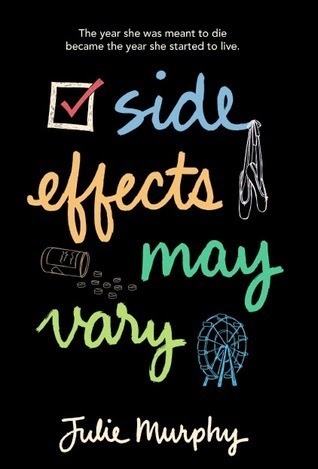
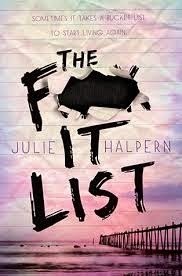
Side Effects May Vary by Julie Murphy: Alice is ready to go out in a blaze of glory, but then she discovers she's in remission from cancer and she must deal with all of the mistakes she's made and the people she's hurt.
The F-it List by Julie Halpern: When Becca does something nearly unforgivable at Alex's dad's funeral, Alex cuts ties with her and focuses on her grieving family. Time passes, and Alex learns Becca has cancer. It also turns out Becca has a bucket list, one she doesn't know she'll be able to finish now. That's where Alex comes in, along with a mysterious and guarded boy who just may help Alex check a few items off her own bucket list.
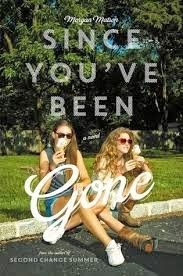

Since You've Been Gone by Morgan Matson: Quiet Emily's sociable and daring best friend, Sloane, has disappeared leaving nothing but a random list of bizarre tasks for her to complete, but with unexpected help from popular classmate Frank Porter, Emily gives them a try.
There Will Come A Time by Carrie Arcos: Overwhelmed by grief and guilt after his twin sister Grace's accidental death, seventeen-year-old Mark Santos is persuaded by her best friend to complete the "bucket list" from Grace's journal.

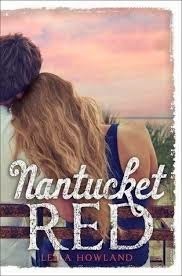
Goodbye, Rebel Blue by Shelley Coriell: Rebecca "Rebel" Blue, a loner rebel and budding artist, reluctantly completes the bucket list of Kennedy Green, an over-committed do-gooder classmate who dies in a car accident following a stint in detention where both girls were forced to consider their morality and write bucket lists.
Nantucket Red by Leila Howland: Before starting college, Cricket Thompson returns to Nantucket for a summer filled with hard choices and infinite possibility. (This description tells you nothing about the list, which is a Life List that Cricket finds).







 Related StoriesMay Debut YA NovelsWhile We Run by Karen HealeyLife By Committee by Corey Ann Haydu
Related StoriesMay Debut YA NovelsWhile We Run by Karen HealeyLife By Committee by Corey Ann Haydu
What's been interesting about this emerging microtrend in the last year is that it's not entirely new. It seems like bucket lists or stories where the main character works through a series of items on a list pops up periodically. There are a lot of variations on the list, too: sometimes it's a straight bucket list that's propelling the story forward and sometimes, it's a list the main character keeps in order to keep his or her life in order (Amy Spalding's The Reece Malcolm List is an excellent example of this). Sometimes, the lists work for the story, and other times, it feels like the list is the only glue keeping the characters and story together.
As someone who is a list keeper, I find the concept interesting from the start, and I think it's something that teens who -- like me -- are compulsive list keepers find this element to be compelling.
Here's a roundup of recent YA bucket list titles, along with descriptions from WorldCat. I've limited to books published in 2013 and 2014. I would love to know of other titles where there are bucket lists or lists kept out in the last year, so feel free to chime in in the comments. I'd also love to know what you think of the bucket list/list usage in books. What are some of the best ones? Which ones haven't worked so well?


Side Effects May Vary by Julie Murphy: Alice is ready to go out in a blaze of glory, but then she discovers she's in remission from cancer and she must deal with all of the mistakes she's made and the people she's hurt.
The F-it List by Julie Halpern: When Becca does something nearly unforgivable at Alex's dad's funeral, Alex cuts ties with her and focuses on her grieving family. Time passes, and Alex learns Becca has cancer. It also turns out Becca has a bucket list, one she doesn't know she'll be able to finish now. That's where Alex comes in, along with a mysterious and guarded boy who just may help Alex check a few items off her own bucket list.


Since You've Been Gone by Morgan Matson: Quiet Emily's sociable and daring best friend, Sloane, has disappeared leaving nothing but a random list of bizarre tasks for her to complete, but with unexpected help from popular classmate Frank Porter, Emily gives them a try.
There Will Come A Time by Carrie Arcos: Overwhelmed by grief and guilt after his twin sister Grace's accidental death, seventeen-year-old Mark Santos is persuaded by her best friend to complete the "bucket list" from Grace's journal.


Goodbye, Rebel Blue by Shelley Coriell: Rebecca "Rebel" Blue, a loner rebel and budding artist, reluctantly completes the bucket list of Kennedy Green, an over-committed do-gooder classmate who dies in a car accident following a stint in detention where both girls were forced to consider their morality and write bucket lists.
Nantucket Red by Leila Howland: Before starting college, Cricket Thompson returns to Nantucket for a summer filled with hard choices and infinite possibility. (This description tells you nothing about the list, which is a Life List that Cricket finds).







 Related StoriesMay Debut YA NovelsWhile We Run by Karen HealeyLife By Committee by Corey Ann Haydu
Related StoriesMay Debut YA NovelsWhile We Run by Karen HealeyLife By Committee by Corey Ann Haydu
Published on June 01, 2014 22:00
May 30, 2014
On Girls, Girl Reading, and Girls in YA Fiction Beyond STACKED
I've been talking a lot about girls and girls reading, as well as girls in YA fiction, over the last year. And while talking on the blog is important, I also think it's important to take these conversations to other venues in order to keep the discussion fresh, vibrant, and engage new voices and ideas.
So with that, I'm really excited to share two pieces of news.
First, I will have an article in August's issue of VOYA all about girls and girls reading. In it, I talk about why having this discussion is important and how as youth advocates, we can be better leaders and facilitators of girls reading. It includes a look at ten titles out in the last year that feature really interesting female main characters. I love all of the books I got to talk about and think they offer some really great ways into the conversation about girls, about female characters, and about girls and girls reading.

My second piece of news is one I am also extremely excited about.
The call for conference proposals for the Wisconsin Library Association meeting went out a few months ago, and I knew it was time to propose something for my own state's meeting. The event's only about a 2 hour drive, and I have never presented in my own state (a scheduling snafu last year meant the plans to do one before didn't work out).
But this year, I'm presenting, and I am thrilled to be co-presenting with author Carrie Mesrobian.
We'll be presenting on Wednesday, November 5 in the late afternoon and the title of our presentation is "Good Girls, Bad Girls, Real Girls: Teen Girls in YA Lit & In Your Library."
If you're around the Dells area or you're going to WLA this year, I hope you come and hear us talk.






 Related StoriesA Whirlwind Trip to PLA 2014, "About the Girls," + Other MusingsALA 2013 Chicago: A RecapSome exciting news
Related StoriesA Whirlwind Trip to PLA 2014, "About the Girls," + Other MusingsALA 2013 Chicago: A RecapSome exciting news
So with that, I'm really excited to share two pieces of news.
First, I will have an article in August's issue of VOYA all about girls and girls reading. In it, I talk about why having this discussion is important and how as youth advocates, we can be better leaders and facilitators of girls reading. It includes a look at ten titles out in the last year that feature really interesting female main characters. I love all of the books I got to talk about and think they offer some really great ways into the conversation about girls, about female characters, and about girls and girls reading.

My second piece of news is one I am also extremely excited about.
The call for conference proposals for the Wisconsin Library Association meeting went out a few months ago, and I knew it was time to propose something for my own state's meeting. The event's only about a 2 hour drive, and I have never presented in my own state (a scheduling snafu last year meant the plans to do one before didn't work out).
But this year, I'm presenting, and I am thrilled to be co-presenting with author Carrie Mesrobian.
We'll be presenting on Wednesday, November 5 in the late afternoon and the title of our presentation is "Good Girls, Bad Girls, Real Girls: Teen Girls in YA Lit & In Your Library."
If you're around the Dells area or you're going to WLA this year, I hope you come and hear us talk.







 Related StoriesA Whirlwind Trip to PLA 2014, "About the Girls," + Other MusingsALA 2013 Chicago: A RecapSome exciting news
Related StoriesA Whirlwind Trip to PLA 2014, "About the Girls," + Other MusingsALA 2013 Chicago: A RecapSome exciting news
Published on May 30, 2014 08:06
May 28, 2014
Book Riot & YA Highway YA Web Award Nominations
We're on a short break until Monday, but a couple of updates we wanted to share in the meantime:

I've written two posts over at Book Riot in the last week. The first is a roundup of 30 YA books coming out -- or just recently released -- that feature diversity in some capacity. The second post is about how brick and mortar bookstores are a privilege.

If you're not a regular reader of YA Highway (you should be!) you may have missed that they're running a web awards. The first round solicited nominees, and we've been honored in a number of categories. We're honored to be considered, especially with all of the other excellent blogs/tumblrs/twitters of amazing members of the YA community on the web.
You can go over there and vote in any or all of the categories, and you can write in other candidates if your favorites haven't been mentioned.









I've written two posts over at Book Riot in the last week. The first is a roundup of 30 YA books coming out -- or just recently released -- that feature diversity in some capacity. The second post is about how brick and mortar bookstores are a privilege.

If you're not a regular reader of YA Highway (you should be!) you may have missed that they're running a web awards. The first round solicited nominees, and we've been honored in a number of categories. We're honored to be considered, especially with all of the other excellent blogs/tumblrs/twitters of amazing members of the YA community on the web.
You can go over there and vote in any or all of the categories, and you can write in other candidates if your favorites haven't been mentioned.








Published on May 28, 2014 19:40
May 23, 2014
It Happens: A Guide to Contemporary Realistic Fiction for the YA Reader
We're going to take the next week off blogging, since there's the double punch of Memorial Day and BEA. I'll likely link to a couple of Book Riot pieces that I've written, but otherwise, no new content will pop up. We'll be back to our regular plans for posting on Monday, June 2.
In the mean time, I thought it might be worth talking about something near and dear to my heart: my book!

This week, I was traveling to see a friend and when I was on the bus, I caught a tweet from VOYA with the title of my book in it. I clicked and discovered my book had a cover.
And I LOVE it.
I've had a few details about it for a while, but I wanted to save sharing them until I had a cover to show off. So without further ado!
As you may have noticed, the title of my book changed from what it was originally. My publisher, when he went to input the book, noted that there were a lot of books with the title "The Real Deal," and suggested a change. I was clueless about what might work, so I put it up in the Book Riot forum. I loved what Liberty suggested, so all of the thanks goes to her for It Happens. I think it's perfect.
While I don't have an official description from my publisher yet, I happened upon this one from an online retailer which gets to the flavor of the book:
Kelly Jensen has a passion for realistic fiction and believes every book has a reader. It Happens: A Guide to Contemporary Realistic Fiction for the YA Reader is a comprehensive guide to matching a teen reader with the right book. As a lifetime reader and young adult librarian, Jensen has read contemporary realistic fiction extensively. Her experience blogging about books and serving on a selection committee taught her how to discuss and consider books critically and how to make connections with other titles. It Happens does all of that and more. Part I gives the reader advisor real tools to understand young adult literature, genres, how to find books, and awards. Part II explores titles in ten different subgenres of realistic fiction, complete with a plot description, a list of appeal factors, and suggested read alikes for each title. Part III has real conversation starters on tough real topics with titles that will challenge readers. Jensen closes with the proposal that we all advocate for teens and their books.
There are three parts to the book. Part one tackles the big stuff and digs deep into defining contemporary/realistic fiction, where and how to find those books that aren't the biggest and most well-known, and how to be a great reader's advisor. Part two includes 10 separate book lists, each with 15 titles fleshed out with summaries, read alikes, and appeal factors. Each of those 10 lists have additional titles, too, in a concluding book list. Part three is about guiding readers through a series of discussion topics, including sex and sexual assault, bullying, and more. I pulled together a handful of key titles on those topics and offered ways to talking about those texts with those big ideas in mind. I finished the book up with how to be the best advocate for contemporary realistic fiction, as well as for readers who want these books.
While the book is geared toward librarians and teachers, I wrote it with readers in mind. That means that it's not jargon-heavy. If you read Stacked and take something away from it, it's in the same tone and from the same point of reference. I think non-librarians/educators will especially find the book lists to be useful, particularly when it comes to answering "I liked x-book by y-author, what do I read next?" It's in the same vein as the "Beyond the Bestsellers" series I do at Book Riot.
And for the other dirty details: I can't find a way of preordering the title yet, but as soon as I do, I'll pass that along. The ISBN for the book is 978-1-61751-031-1, and it will be $50 for the 278 page book. For those who aren't familiar with the library/educational publishing landscape, that's on the low end for price. If you're a subscriber to either VOYA or Teacher Librarian, you do get a 20% discount off list price. It will be available for purchase through all major online retailers, through VOYA's website, as well as through all major book distributors (Ingram, Baker and Taylor, etc).
The "official" publication date is early August, but it will be available at ALA Annual, if you happen to be going (...and if you happen to be going and want to send me a picture, you would be my Favorite). It will likely be available to purchase before the pub date, which is more of a placeholder than it is a hard and fast date.
I don't believe I've talked about one of my favorite parts of the book yet, which is something that I thought about immediately when writing the proposal for it back in 2012 (!). To kick off each chapter of the book -- and there are 22 -- I asked some of my favorite librarians, teachers, and contemporary/realistic authors to weigh in on why they care about, talk about, and write contemporary YA. Their answers are amazing, and they added such fantastic context to what I hoped to convey. There's one in particular that every single time I read it, I welled up a bit because it was so perfect and captured the spirit of why I love and care so much about realistic fiction.
A few weeks ago, I did a podcast with Steve Thomas for Circulating Ideas about the book and we talked at length about diversity, about book talking, and about the value of reaching readers with the right books. It's not live yet, but when it is, I'll share it -- it was a fantastic conversation.
Beyond that, I'll post when I have preorder information, as well as when I have Real Actual Copies in my possession. You can expect a few giveaways down the road, as well.
This is a book I am exceptionally proud of and hope is of value to those who work with readers or who are enthusiastic to learn more about contemporary/realistic fiction.

It's surreal to see a cover of a book with my name on it, let alone a cover that is also easy on the eyes. I can't wait to share this.






 Related StoriesWhat I will tell you about my bookLife By Committee by Corey Ann HayduReader's Advisory and Contemporary YA Fiction from the CLA Conference
Related StoriesWhat I will tell you about my bookLife By Committee by Corey Ann HayduReader's Advisory and Contemporary YA Fiction from the CLA Conference
In the mean time, I thought it might be worth talking about something near and dear to my heart: my book!

This week, I was traveling to see a friend and when I was on the bus, I caught a tweet from VOYA with the title of my book in it. I clicked and discovered my book had a cover.
And I LOVE it.
I've had a few details about it for a while, but I wanted to save sharing them until I had a cover to show off. So without further ado!
As you may have noticed, the title of my book changed from what it was originally. My publisher, when he went to input the book, noted that there were a lot of books with the title "The Real Deal," and suggested a change. I was clueless about what might work, so I put it up in the Book Riot forum. I loved what Liberty suggested, so all of the thanks goes to her for It Happens. I think it's perfect.
While I don't have an official description from my publisher yet, I happened upon this one from an online retailer which gets to the flavor of the book:
Kelly Jensen has a passion for realistic fiction and believes every book has a reader. It Happens: A Guide to Contemporary Realistic Fiction for the YA Reader is a comprehensive guide to matching a teen reader with the right book. As a lifetime reader and young adult librarian, Jensen has read contemporary realistic fiction extensively. Her experience blogging about books and serving on a selection committee taught her how to discuss and consider books critically and how to make connections with other titles. It Happens does all of that and more. Part I gives the reader advisor real tools to understand young adult literature, genres, how to find books, and awards. Part II explores titles in ten different subgenres of realistic fiction, complete with a plot description, a list of appeal factors, and suggested read alikes for each title. Part III has real conversation starters on tough real topics with titles that will challenge readers. Jensen closes with the proposal that we all advocate for teens and their books.
There are three parts to the book. Part one tackles the big stuff and digs deep into defining contemporary/realistic fiction, where and how to find those books that aren't the biggest and most well-known, and how to be a great reader's advisor. Part two includes 10 separate book lists, each with 15 titles fleshed out with summaries, read alikes, and appeal factors. Each of those 10 lists have additional titles, too, in a concluding book list. Part three is about guiding readers through a series of discussion topics, including sex and sexual assault, bullying, and more. I pulled together a handful of key titles on those topics and offered ways to talking about those texts with those big ideas in mind. I finished the book up with how to be the best advocate for contemporary realistic fiction, as well as for readers who want these books.
While the book is geared toward librarians and teachers, I wrote it with readers in mind. That means that it's not jargon-heavy. If you read Stacked and take something away from it, it's in the same tone and from the same point of reference. I think non-librarians/educators will especially find the book lists to be useful, particularly when it comes to answering "I liked x-book by y-author, what do I read next?" It's in the same vein as the "Beyond the Bestsellers" series I do at Book Riot.
And for the other dirty details: I can't find a way of preordering the title yet, but as soon as I do, I'll pass that along. The ISBN for the book is 978-1-61751-031-1, and it will be $50 for the 278 page book. For those who aren't familiar with the library/educational publishing landscape, that's on the low end for price. If you're a subscriber to either VOYA or Teacher Librarian, you do get a 20% discount off list price. It will be available for purchase through all major online retailers, through VOYA's website, as well as through all major book distributors (Ingram, Baker and Taylor, etc).
The "official" publication date is early August, but it will be available at ALA Annual, if you happen to be going (...and if you happen to be going and want to send me a picture, you would be my Favorite). It will likely be available to purchase before the pub date, which is more of a placeholder than it is a hard and fast date.
I don't believe I've talked about one of my favorite parts of the book yet, which is something that I thought about immediately when writing the proposal for it back in 2012 (!). To kick off each chapter of the book -- and there are 22 -- I asked some of my favorite librarians, teachers, and contemporary/realistic authors to weigh in on why they care about, talk about, and write contemporary YA. Their answers are amazing, and they added such fantastic context to what I hoped to convey. There's one in particular that every single time I read it, I welled up a bit because it was so perfect and captured the spirit of why I love and care so much about realistic fiction.
A few weeks ago, I did a podcast with Steve Thomas for Circulating Ideas about the book and we talked at length about diversity, about book talking, and about the value of reaching readers with the right books. It's not live yet, but when it is, I'll share it -- it was a fantastic conversation.
Beyond that, I'll post when I have preorder information, as well as when I have Real Actual Copies in my possession. You can expect a few giveaways down the road, as well.
This is a book I am exceptionally proud of and hope is of value to those who work with readers or who are enthusiastic to learn more about contemporary/realistic fiction.

It's surreal to see a cover of a book with my name on it, let alone a cover that is also easy on the eyes. I can't wait to share this.







 Related StoriesWhat I will tell you about my bookLife By Committee by Corey Ann HayduReader's Advisory and Contemporary YA Fiction from the CLA Conference
Related StoriesWhat I will tell you about my bookLife By Committee by Corey Ann HayduReader's Advisory and Contemporary YA Fiction from the CLA Conference
Published on May 23, 2014 22:00



